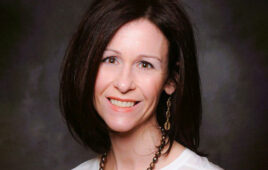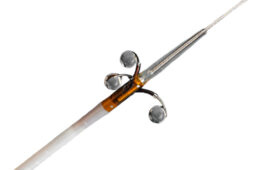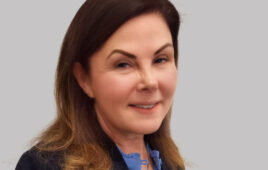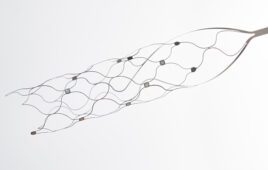
Shannon Diamond, Nordson Medical Tooling Engineer III [Photo courtesy of Nordson Medical]
Diamond is responsible for 10-20 mold projects every year in addition to sustaining and improving molds in production. She overhauled the ECO process and drove an update to the general FMEA used on legacy parts at Nordson Medical. She is an ISO-9001 auditor and worked with Nordson corporate EHS to set up and run an on-site safety observation program to empower all employees to own safety.
Diamond is a graduate of the Rochester Institute of Technology and holds a bachelor of science degree in mechanical engineering.
What drew you to medtech? When did you first know you wanted to be in the industry?
Diamond: Honestly, I never knew about the medtech industry. I went to school with dreams to be an aerospace engineer, and the practical nature to realize that a mechanical engineering degree would keep me employed. I found that I enjoyed manufacturing. Knowing that your work leads to an actual product that can be held and used is very rewarding. Being in the medtech field adds value since the components I help make are used to heal and help people. I have even seen my products used to help my family.
Talk about your leadership skills. What is the most important lesson you have learned that has guided you in your career?
Diamond: Leadership involves a lot of confidence. Not only in yourself, but in your team. Most work worth doing takes a team and yet many people still feel that only their individual contributions matter. Leaders need to guide and encourage, which means listening to those around them. And listening isn’t limited to hearing those with the loudest voices but hearing the concerns and getting the team to a solution that meets the actual needs of the customer, whether internal or external. Once, I was assigned to help a team that had been struggling to complete a project and was months overdue. The cross-functional team members each had their own concerns about the final product and were not listening to each other. After review, we were able to identify the concerns that needed to be addressed to meet the customer specifications and those that were extraneous. Shortly after that we launched the product and supplied completed samples to the customer.
In your opinion, what more can be done to promote greater participation of young women in the medtech industry today?
Diamond: I believe that most students going into college for science and technology degrees do not know about medtech as an industry. Guidance counselors need to be educated on the variety of work that an engineering degree can lead to and how broad the medical field truly is. Booths at career fairs at any schooling level help with awareness, and companies need to support sending representatives to events and letting the public know what they do every day. Company tours and apprenticeship programs can also help if they are engaged with school resources.
What career advice would you give to your younger self?
Diamond: I would tell myself, “Don’t be afraid to speak up.” Although I was always confident in my abilities, I assumed there was some secret formula that my co-workers had that I didn’t. I was less inclined to raise an objection or suggest a solution because I worried I was missing some critical piece of information. I have learned that there is no secret formula, and that my perspective is not the same as the others in the room. So when I don’t speak up, the idea could be lost.
Why is it important for companies to be more inclusive and have more women in charge?
Diamond: Companies win when they have diversity. More diverse backgrounds mean more innovation, and innovation leads to profit. Women need to have leadership roles to encourage the younger generation to pursue the career option. Women with talent may not seek a position in medtech because they do not see anyone like themselves in a role they want to obtain. It is easy to pivot into another career that has a history of promoting women. This is a cycle that must be broken. Women need to pursue those roles, and businesses need to be advocates — not only the C-suite executives or Human Resource departments, but employees throughout an entire organization.




